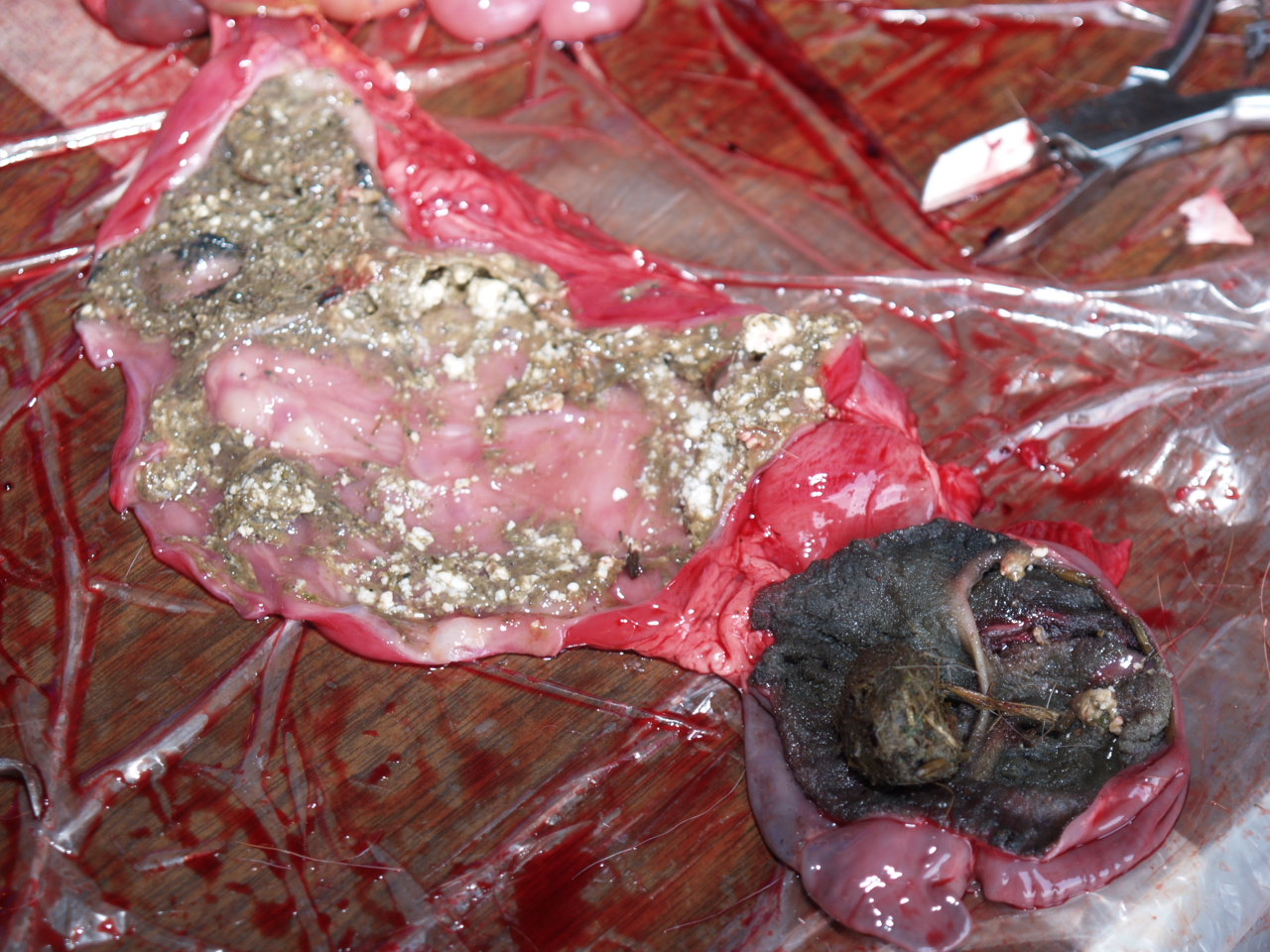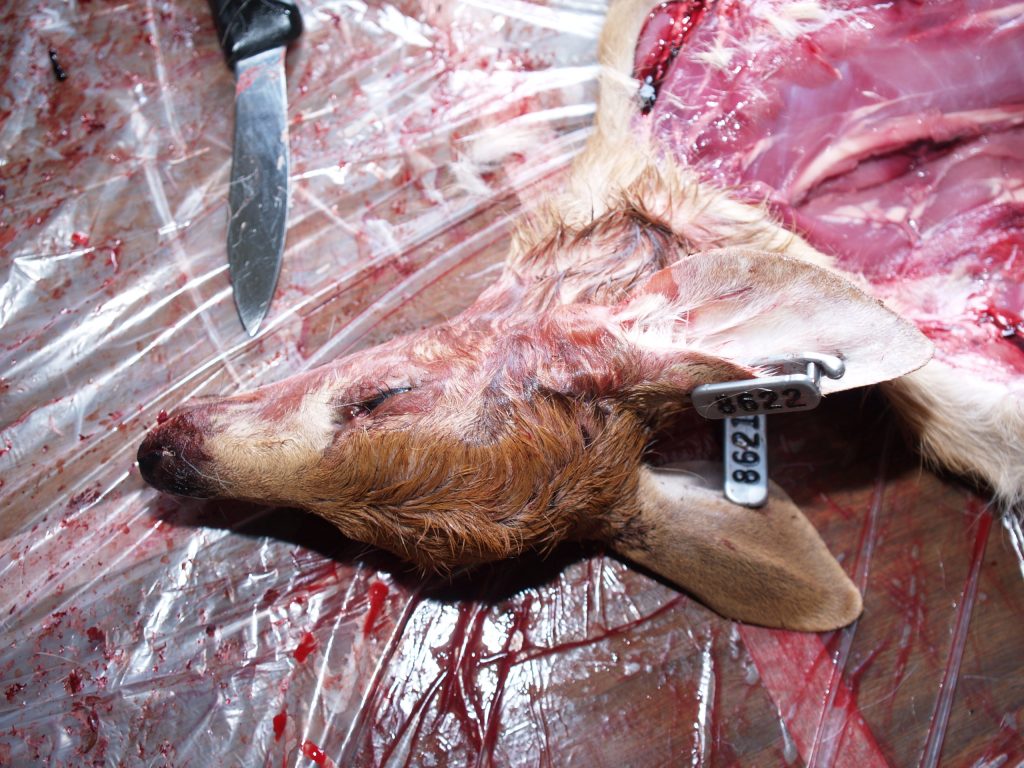Fawn 8621 was captured on June 9th and weighed over 9 lbs. It was picked up by the recovery team on June 24th.
This time we had a whole carcass! When it arrived on the necropsy table, it weighed 14.5 lbs.
External examination revealed punctures to the head and ear. Other than that, there was nothing else remarkable to note. We began the internal examination. The skull was fractured and had associated hemorrhaging visible when it was skinned.
There were three 4-mm punctures in the skin which corresponded with the skull fracture. Details of the skull fracture – one large puncture and fracture on the left side with a smaller 2mm X 5mm puncture along the midline. There was hemorrhaging throughout the cerebrum and cerebellum of the brain.
The neck showed no sign of trauma or hemorrhage.
There was grassy digesta in the rumen and milk in the abomasum.

The rumen (lower right) contained grassy digesta (vegetation) and the abomasum (upper left) contained milk
It was obvious that something killed this fawn.
Fawn 8621 showed no signs of abandonment. It had gained nearly 5 lbs in 15 days and had milk in its digestive tract. Mom was obviously taking good care of her fawn. The skull fracture was the cause of death.
What would put the effort into killing prey and leave the carcass intact? We had a pretty good idea. We consulted the field report to verify our suspicions.
The report noted that the carcass was not cached. There was no scat or hair or tracks within 20 meters of the carcass. But there were chase trails in the surrounding area and canid tracks approximately 40 meters from the carcass leading into the field where the carcass was found.
The size and location of the puncture wounds also pointed to a canid. However, the canid in this case is Canis familiaris. Both coyotes and foxes cache their prey.
Coyote kills typically have puncture wounds to the skull; fox kills usually show trauma to the throat and neck. Both these canid species consume their prey.
Dogs, on the other hand, don’t cache and don’t eat. Man’s best friend is not a deer’s best friend. It is estimated that dogs kill 500 to 1,000 deer annually in Pennsylvania.
Dogs are like the neighborhood hoodlums – up to no good for no reason sometimes with deadly consequences. Intentional or not, Fido is guilty and has been added to the most wanted list.
-Jeannine Fleegle, biologist
PGC Deer and Elk Section
If you would like to receive email alerts of new blog posts, subscribe here.
And Follow us on Twitter @WTDresearch
